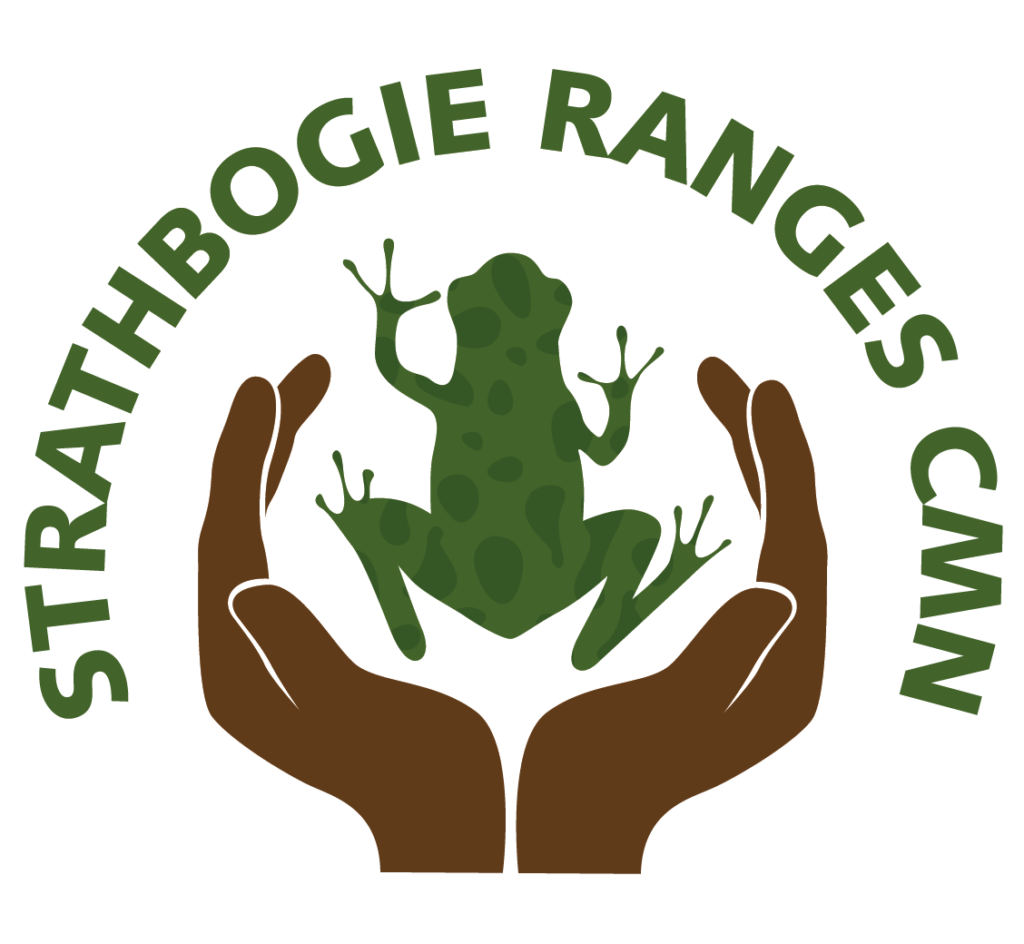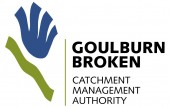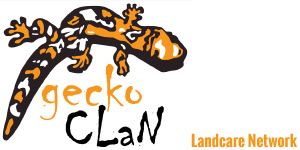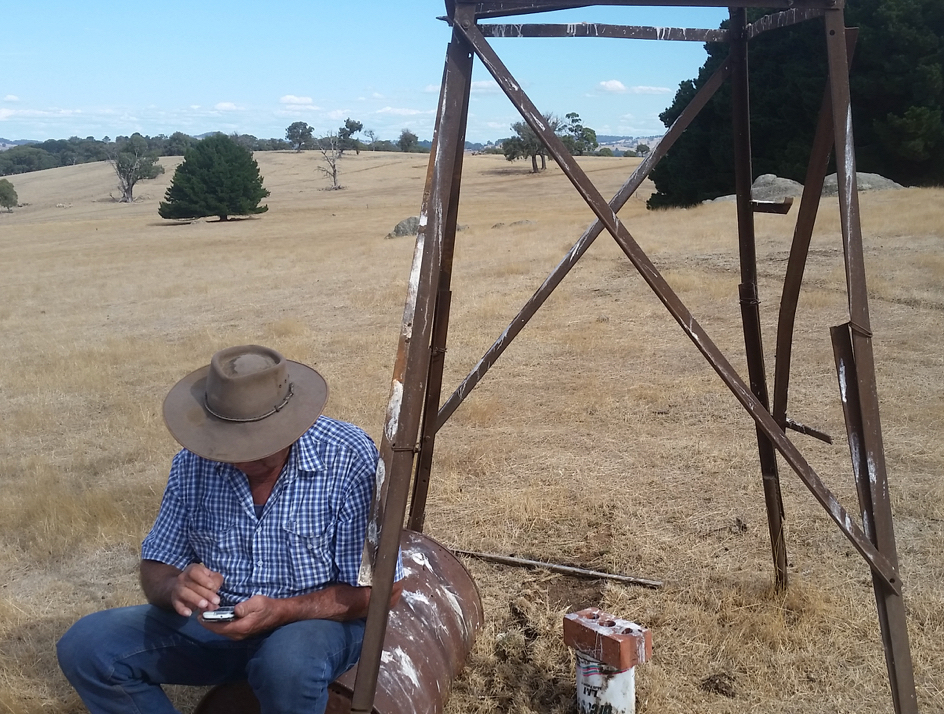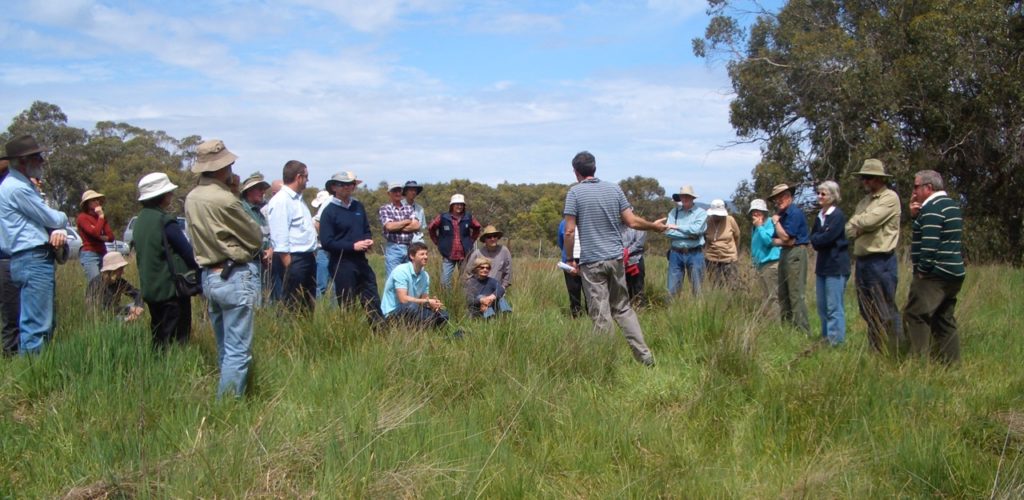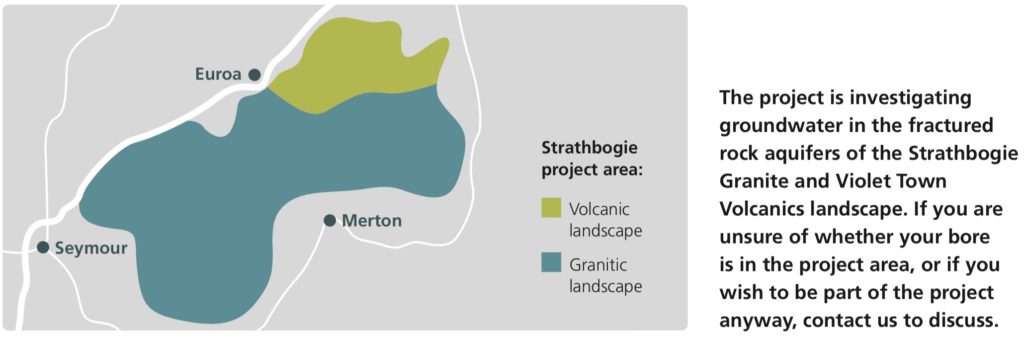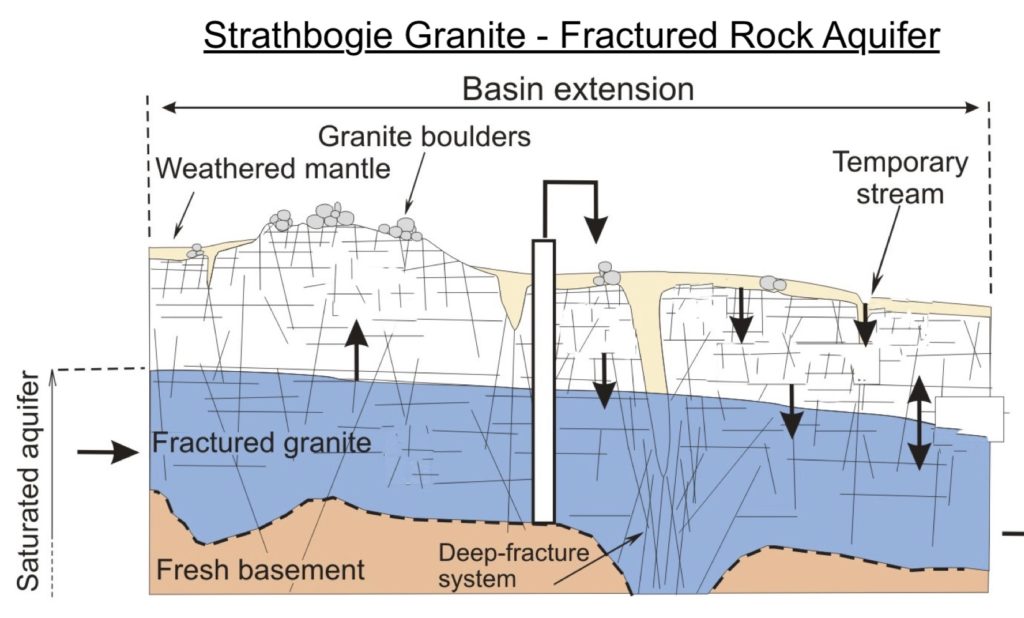One of the most important natural resources in the Strathbogie Ranges is accessible, good quality and plentiful groundwater. Many of us rely on groundwater to fill dams and tanks and it’s critical for maintaining the health of our creeks and wetlands. The importance of groundwater in the Strathbogies was highlighted by the Millenium Drought, when many bores, dams and wetlands dried up.
It may come as a surprise, but the groundwater resources in the Strathbogie Ranges are currently poorly understood. To improve our understanding we are embarking on a long-term groundwater monitoring program. Many landholders in the Stratbogie Ranges have a groundwater bore, either for stock and domestic use, or for irrigation. These bores provide a window for observing changes in groundwater.

Hydrology of wetlands field day, Strathbogie Ranges, 2009. 
Groundwater bore and old windmill stand, Strathbogie.
In 2010, University of Melbourne researchers completed an investigation into the hydrology of groundwater-dependent wetlands on the Tableland and the Arthur Rylah Institute examined the floristic values of wetlands in the Strathbogie Ranges. Now, a multi-year investigation examining the nature of the groundwater system on the Strathbogie Tableland is being conducted by University of Melbourne. This research will build on previous projects, run parallel to the community surveys and improve our understanding of how the broader groundwater system in the Strathbogies operates.
This project has used a combination of fully automated monitoring and manual ‘bore-dipping’ equipment to measure seasonal changes in the depth of groundwater.


Schematic diagram of fractured rock aquifer in a granitic landscape.
The project has collected general groundwater information from bores in different parts of the Strathbogie Ranges, as well as detailed information from bores in the Seven Creeks catchment above the Seven Creeks gauging station (below Polly McQuinn’s).
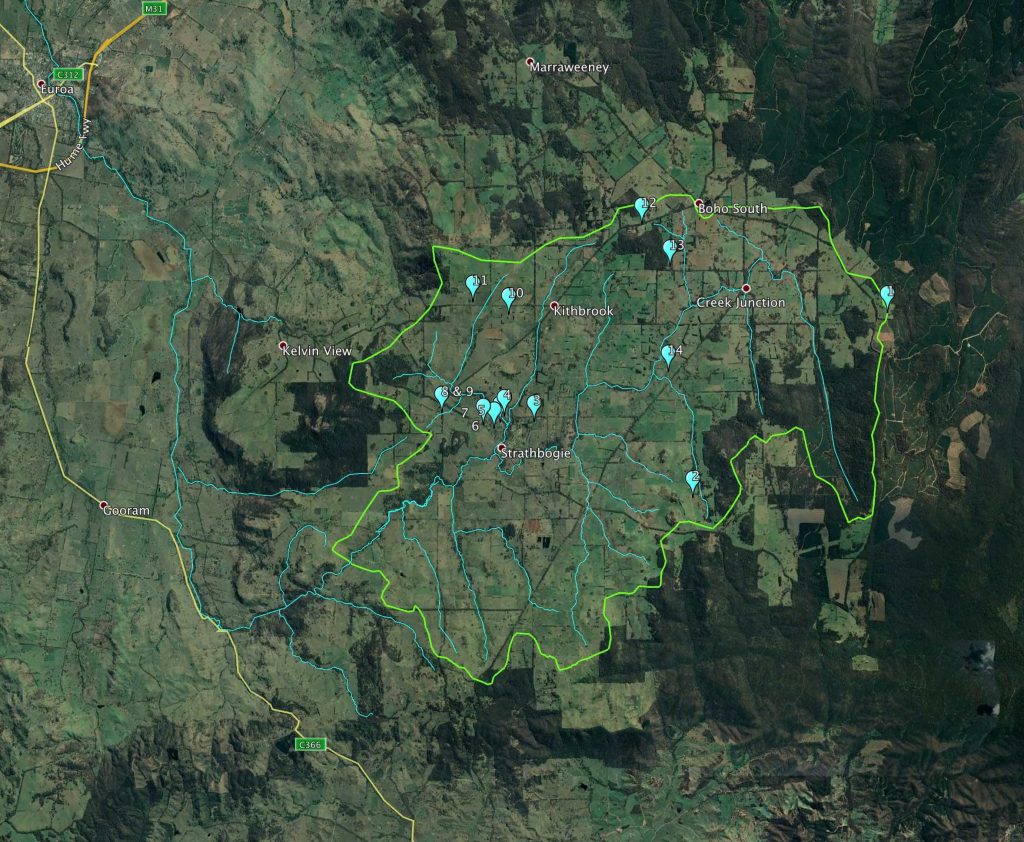
The monitoring of private groundwater bores, through this project, has raised the general level of interest in groundwater in the broader community, which is a very good thing! Every resident and landholder on the Tableland relies on groundwater in one form or another – it’s worth repeating that groundwater is integral to the healthy functioning of the entire landscape and it’s cargo of human and non-human life.
But manually monitoring groundwater levels in these bores, though useful, isn’t enough to understand how the groundwater system actually operates. Perhaps the most useful aspect of this project is that it has now attracted research investment from the University of Melbourne, with assistance from a grant from the Victorian Government. Towards the end of the community monitoring program, University of Melbourne PhD candidate Giancarlo Bonotto and his Supervisor Dr Tim Peterson (now of Monash University), began their research by installing automatic groundwater sensors into the bores that we had been monitoring.
Automated bore monitoring has already shown us several things:
- water levels in bores, even those relatively close together, can behave very differently
- some bores respond very quickly to local rainfall (within minutes), some seem to respond only to seasonal rainfall change
- the distance a bore is from rocky recharge areas appears to have a major influence on water-level behaviour
- generally speaking, the bore pumping that occurs in several of the monitored bores, appears to have little medium-term impact on the water-level in the bore. [All of the bore pumping in the project bores is for stock and domestic purposes.]
Over the next few years, we hope Giancarlo’s research will shed more light on just how the Strathbogie Tableland groundwater resource works and perhaps how it will respond to the rainfall changes predicted by global warming.
You can read more about project activities and automated bore monitoring in the links below.
Updates:
A Wetland Wonderland – wetlands on the Strathbogie Tableland – July 2020 & Our Remarkable Wetlands
Strathbogie Tableland Groundwater Project –April 2020
Strathbogie groundwater update – January 2020
Strathbogie Tableland Groundwater Project update, Tableland Talk, September 2, 2019
Groundwater – where does it come from, where does it go ? – September 2019
Strathbogie groundwater update – June 2019
This a SRCMN partnership project and is supported by the Goulburn Broken Catchment Management Authority and the Vctorian Government.
Click here to view the project on the GBCMA website.
Bertram Lobert June 2021
